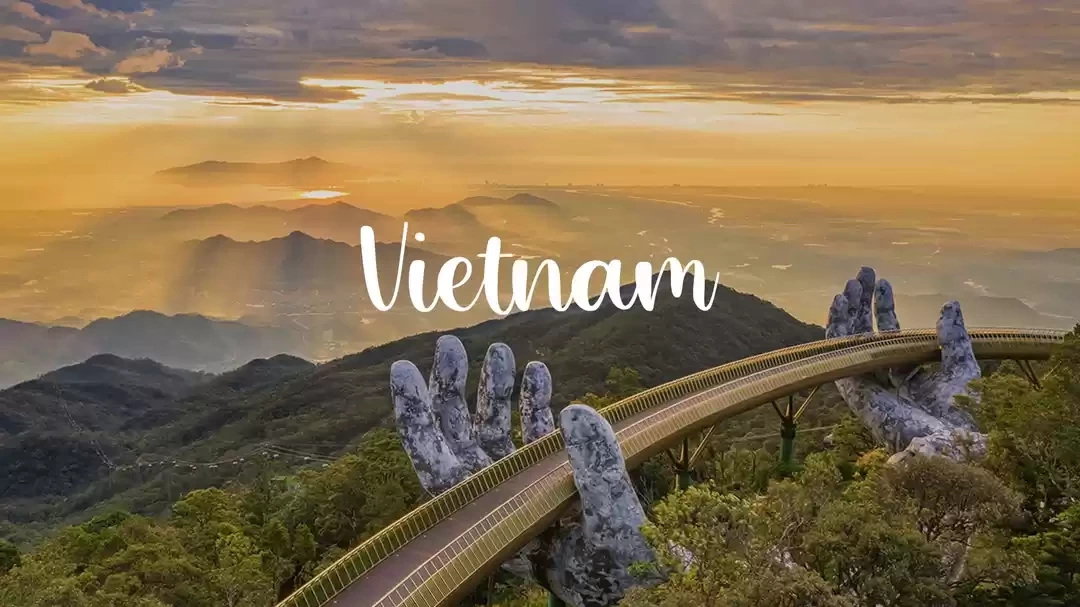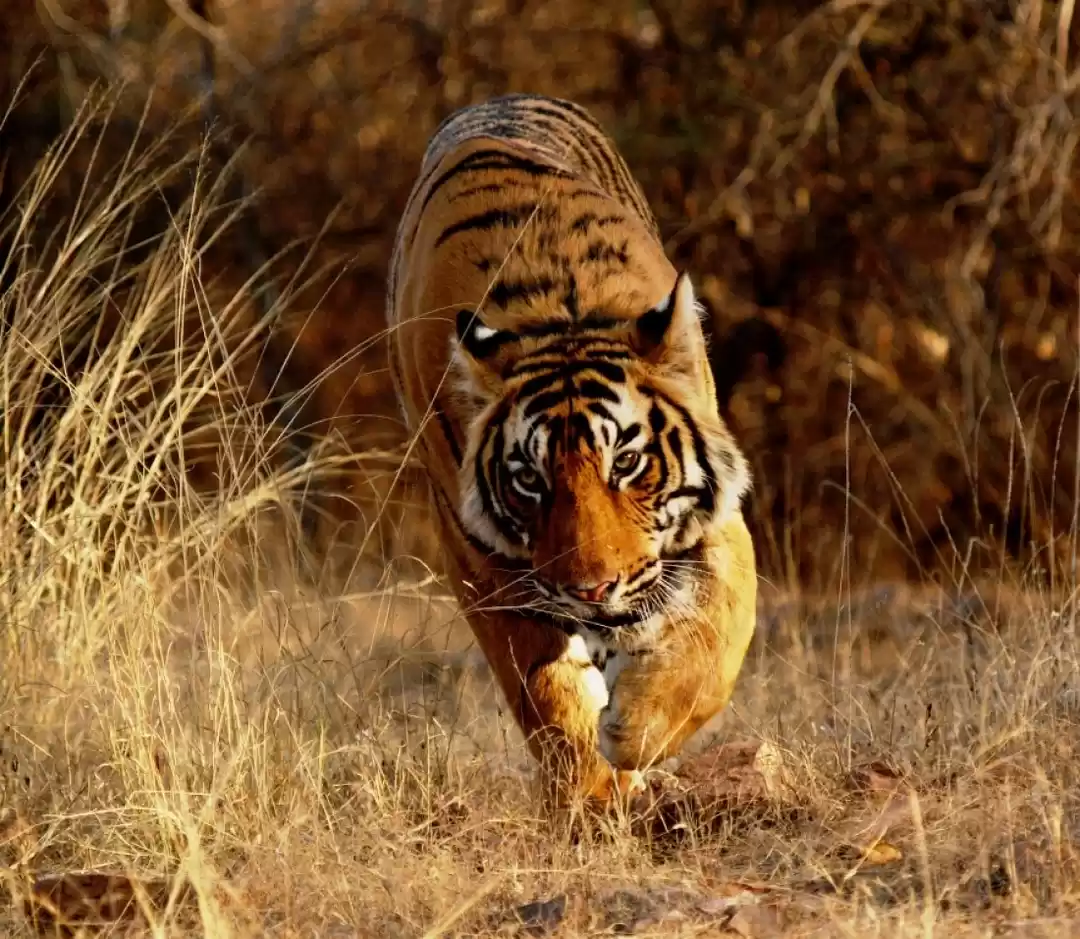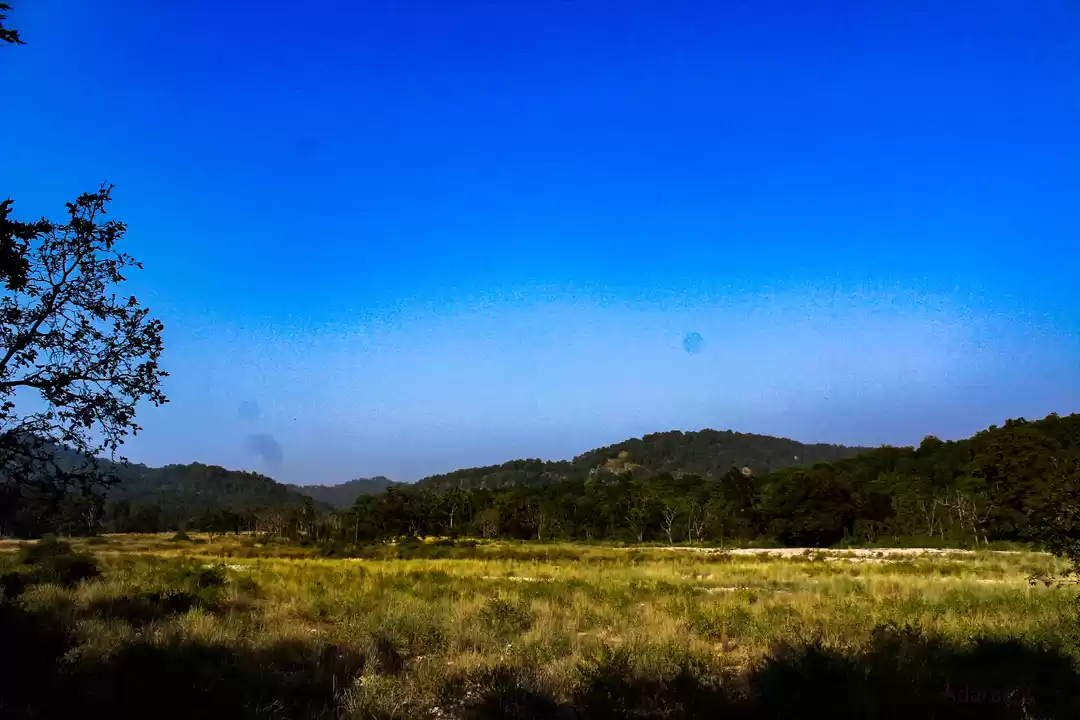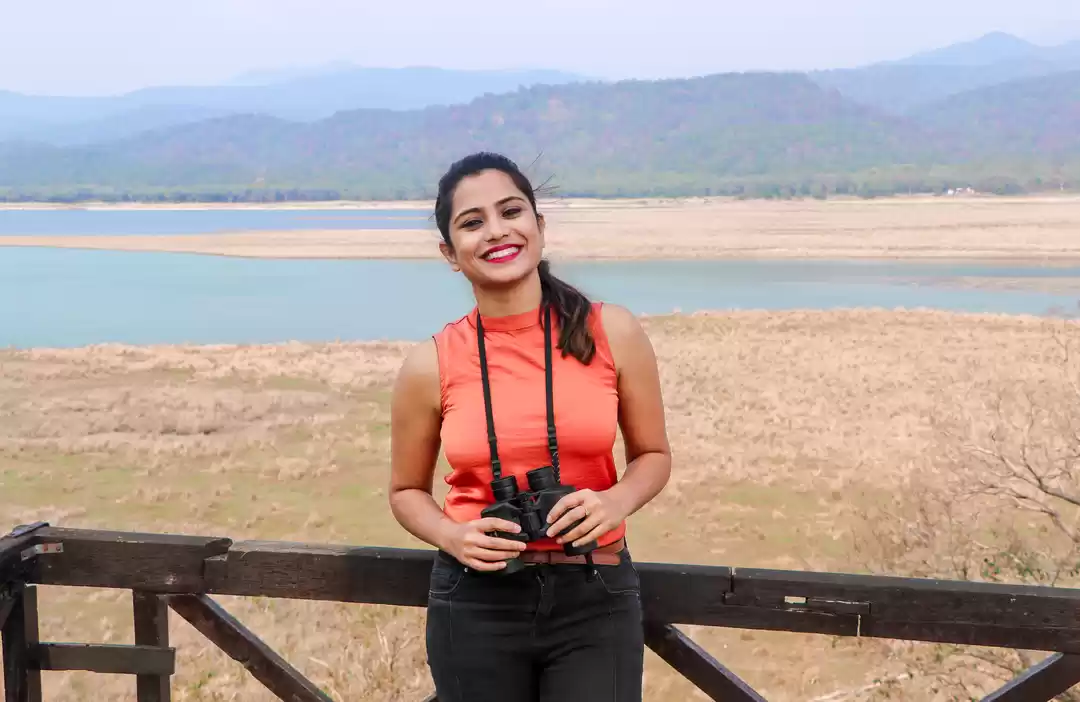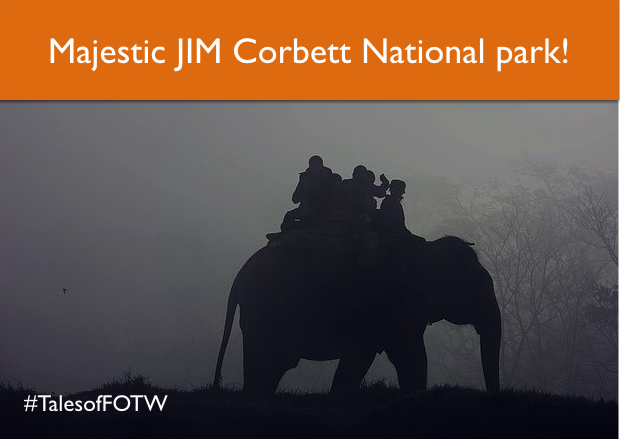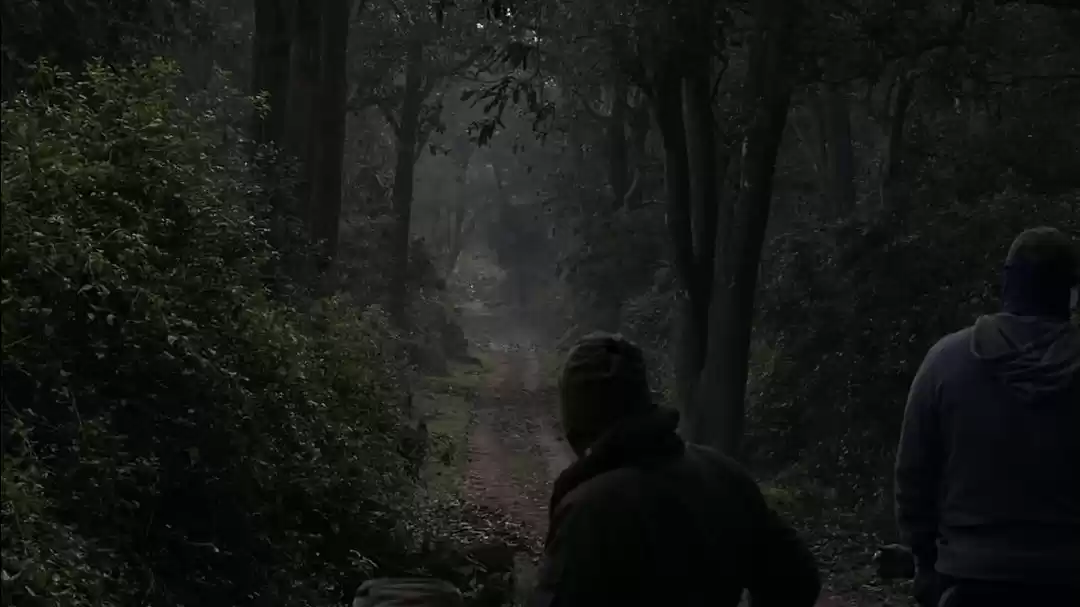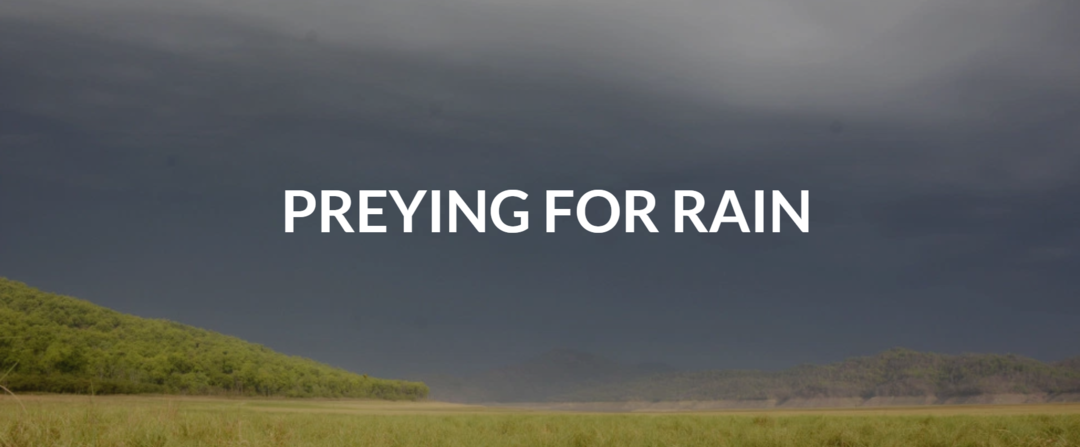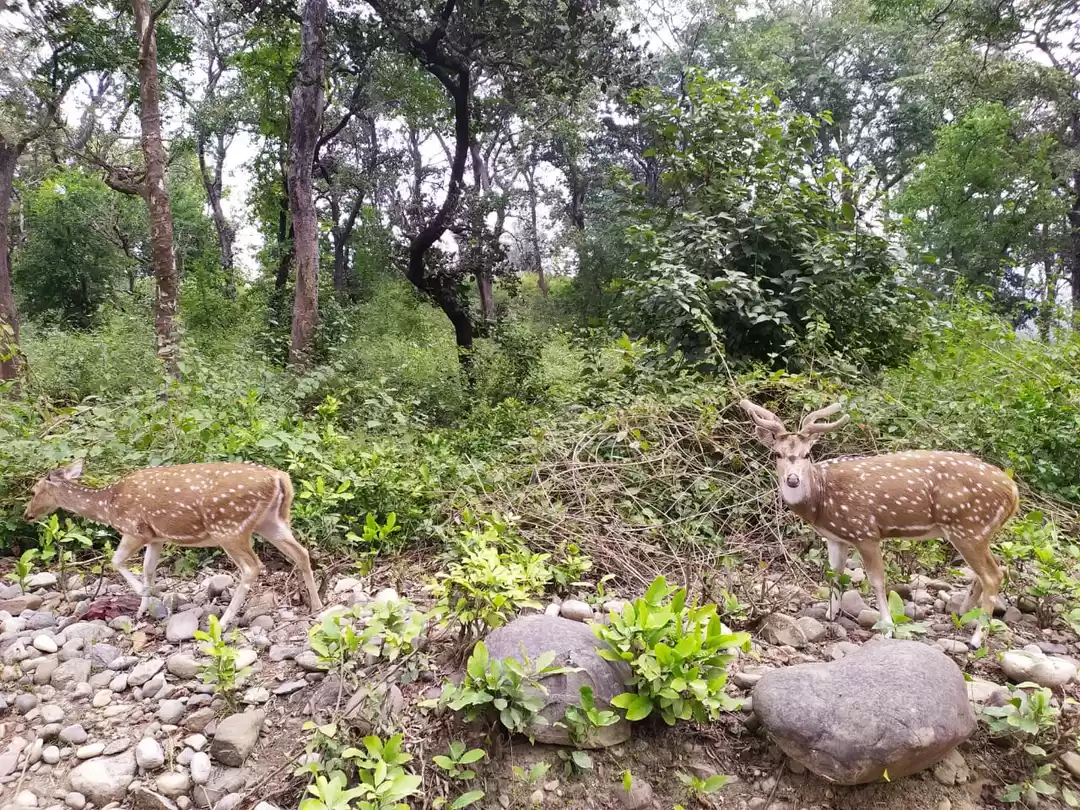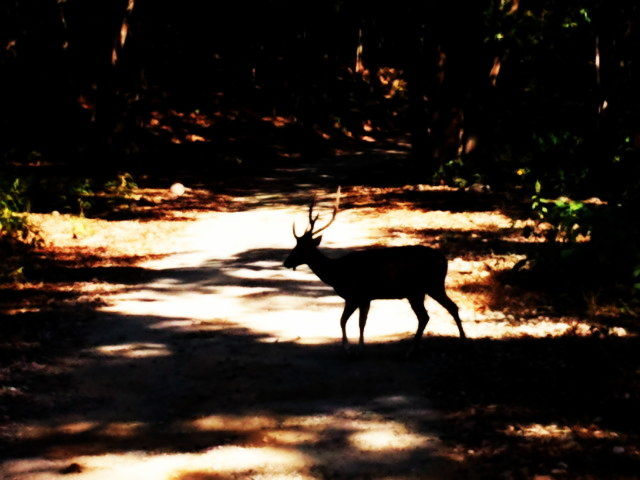

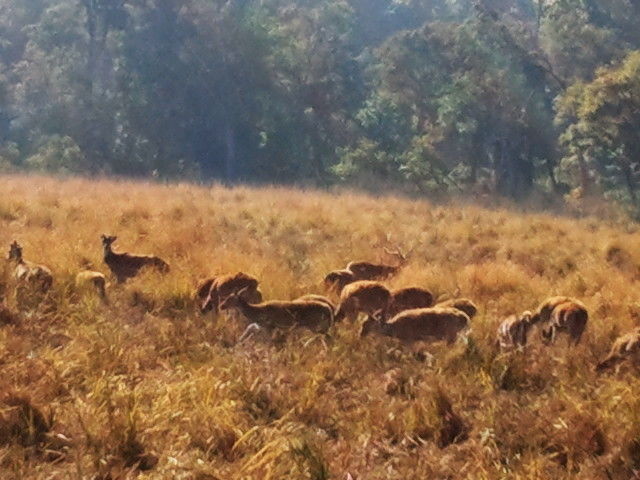
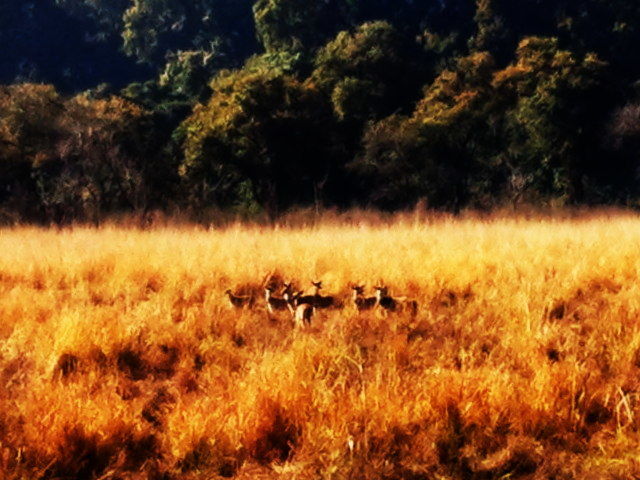
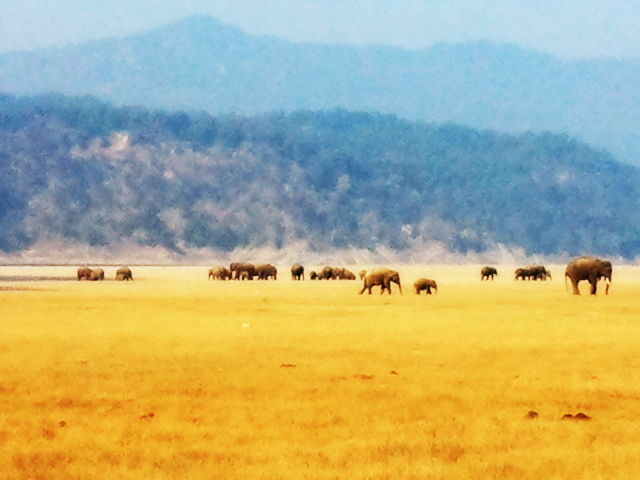
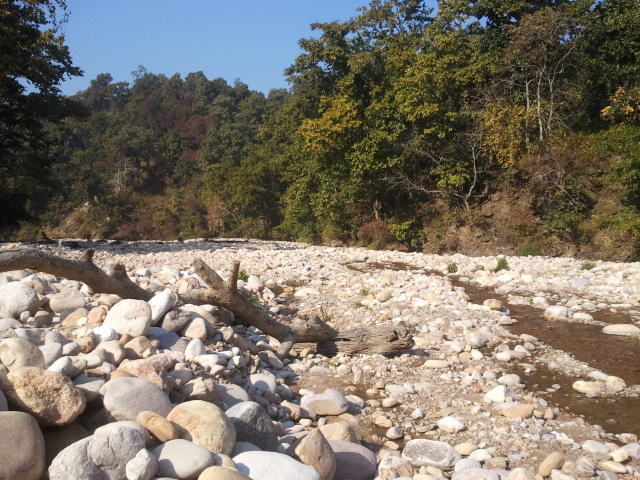
Even though we all know how a tiger looks like, it is always exciting to catch a glimpse of the big cat out there in the wild. My desire for a rendezvous with this glorious member of the tigrine species compelled me to plan my trip to Jim Corbett National Park. After some basic research and advice from ‘Lonely Planet’ Travel Guide - I opted for Dhikala Zone, the most happening part of Corbett Tiger Reserve.
It’s actually quite easy for those residing in Delhi; one can hop a train to Ramnagar – starts every night at 10: 40 PM. The journey is about five hours and by the time you wake up you are in Ramnagar. Ramnagar is unappealing, but once you start driving and get a glimpse of the rising sun across the mountain range and the river Koshi – you realize that it’s indeed a great decision to visit this wonderful forest.
January 25, 2013
My first meeting with someone not from my species happened quite early during my trip. It was a Samber Deer – The largest Asiatic Deer. My Jeep driver Mr. Hem stopped immediately for my first ‘aha’ moment. The creature stared at me for quite a while without making any fuss about my presence. As I am not used to being stared at by animals, I was indeed quite surprised and I did exclaim my wonder to Mr. Hem. Apparently the creature was quite disheartened for he not only left the spot but did so in great hurry.
Moral: When you are out in the wild – do not make any noise. These animals are quite used to silly creatures called Humans in their odd Jeeps – but they do not really endure the strange sound humans make called ‘speech’.
Throughout my journey to Dhikala Zone (which took around three hours) I spotted several Deer (mostly the Chital or Spotted Deer and Barking Deer). My Driver stopped several times to listen to alarm calls (which explains the presence of tiger) and at sunny open areas where the tigers like to bask in winter. However, no one apparently was to be found.
I checked in at Dhikala (Old Forest Rest House) at around 10:00 AM. As per the suggestion of my Driver I immediately made the reservation for the elephant ride for the next morning (As elephants are limited and you cannot get a seat if there is a rush of visitors). I was waiting impatiently for my meeting with Mr. Tyger, however as per forest rules one can only start at 2:00 PM and again return back by 5:30 PM. As per rules the animals are not to be disturbed by us between 11:30 AM and 2:00 PM. The Dhikala Forest House has a small but well stocked library, an amphitheater, two restaurants and wonderful sightseeing arrangements. I spent my time hopping around the rest house area and browsing through the pages of “Man Eaters of Kumaon”.
My Jeep was the first to start, exactly at 2:00 without wasting a second. And my guide (Mr. Rakesh) wanted to take advantage of this fact. We went straight ahead to the area known as ‘Mota Sal’ or the fat Sal tree. This spot is marked by a broken tree– as my guide explained; it used to be the fattest Sal tree in the forest which was struck by thunder. Mota Sal apparently is the address of Mr. Tiger. As we approached my driver Hem exclaimed about spotting a movement. However, in the absence of any alarm call, my guide pooh-poohed the idea as being wild boars.
We waited for a while in Mota Sal, but could not hear any call. Therefore we decided to meet the elephants and deer first. The Ramganga Reservoir, where wild elephants and deer come to drink is very near ‘Mota Sal’. As we approached the wondrous herd of wild elephants my guide heard the alarm call which surmised the presence of a tiger. After a few hurried clicks of the tusker and the elephant herd – we rushed back to the thunder struck tree. But then again the call sounded somewhere a little ahead in the yellowish grassy field where the chital deer were grazing. A few turns of our Jeep and my driver seared to have seen the silhouette of the big cat again. We rushed and lo behold there actually was the Royal Bengal Tiger in the bush about 10 feet away from me in the left. As soon as the big cat caught sight of us it immediately hid inside the bushes. But for the few seconds we met – there was an increase in adrenalin surging through my veins. The tiger was more saffronish and less yellowish in colour. A few more Jeeps followed us and we all waited impatiently to catch a glimpse of this elusive creature. After eight minutes or so the tiger jumped and growled and vanished into the bushes. These few moments – the first when the tiger blankly stared at us and the second when it growled (apparently being angered as we spoiled his lunch) and jumped, rather galloped in a succession of five small jumps – a la National Geographic moment, would be amongst my fondest memories of Corbett.
Content, Excited and Proud for making me witness the big cat just within twenty minutes or so of the start of my Jungle Safari, my guide Mr. Rakesh promised me a Leopard. We headed towards a place called Ringora where one Leopard has reportedly hanged two Chital Deer in the tree. While on the way my Guide explained to me the difference between the behavior of a Leopard and a Tiger. The basic facts are, first, a Tiger often is found in open areas and keeps its kill in bushes. The leopard is to be found where the tigers frequent less often. Moreover, the Leopard hangs it’s kill up in the trees to protect from other carnivores. The Leopard is also much smaller as compared to a Tiger.
As we approached Ringora we met a Jeep with two Australian women staring at the tree where the Leopard has hung the Chital Deer. We waited for a while but Mr. Leopard was nowhere to be seen. After sometime the Australians left with their Jeep and almost immediately we saw the Leopard camouflaged in a fallen tree. Immediately my guide signaled for the Australian group to come back, but as soon as they approached the Leopard has vanished.
After waiting again for a while we decided to meet the crocodiles just nearby in the confluence of the reservoir. The crocodile part was kind of disappointment as I could only spot them through binocular that too on the other side of the bank. However, this confluence was indescribably stunning. This part of the forest is so so awesome that you forget the Leopard, forget the Tiger, and forget the Crocodile – you are in front of a blue blue serene river. The best part of Corbett is its virgin beauty. It’s utterly clean and unpolluted. After a few clicks we decided to head back to spot the Leopard and since we had time we decided to wait for a while. We waited for around thirty minutes without making any noise for the Leopard to come back to its kill. By the time we felt we must return back we spotted the silhouette of the Leopard between two trees. It was cleaning its right paw just as a pussy cat will do after eating a fish. The leopard was a little far and could only be seen clearly with the binocular. However, it was one of the prettiest sights I have ever witnessed.
January 26, 2013
My trip was planned as Elephant Ride in the morning from 7:00 PM to 9:00 PM followed by Jeep Safari till 11:30 and then my return journey after Lunch. The morning was quite foggy and we could not spot anything for a while. And then we did spot several Chitals, three wild boars, two peahens taking a flight as soon as we approached and some teeny weensy unknown birds. The best part of the safari in an elephant is the fact that you can reach those areas where Jeeps cannot take you. And there are better chances of spotting a tiger from a small distance. However, apparently tigers were in no mood for a conversation with us – but I did enjoy the ride. The forest is a magical place and the mist made everything look so surreal. If you do not believe then check the clicks.
My morning Jeep safari started from Mota Sal. We followed some alarm calls from several directions, saw some fresh pug marks and met the Australians returning. Ms. Jane was grinning today as luck has indeed favored them. They just had an encounter with the Royal Bengal Tiger.
We waited in another area where several vultures were seen flying. Apparently vultures can be found in areas near a kill. Though it was obvious that a tiger was nearby we could not manage to spot one.
During my return journey I spotted several birds and deer. Checked the museum and bid adieu to Jim Corbett National Park with fond memories. Indeed this trip was one my bestest (sic) trips so far.
This trip was originally published in the blog আনমনে on 29th January, 2013.







